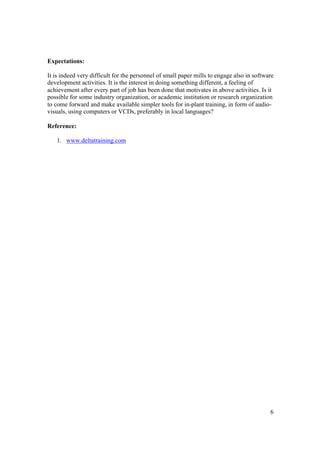This document discusses manpower training in small paper mills. It notes that small mills often lack formal training systems compared to larger mills. Lower level workers in small mills tend to be less skilled than higher levels. The document proposes several actions for small mill training, including regular knowledge tests, weekly quizzes, and developing multimedia training tools. It provides examples of gains from training, such as reduced paper weight variations and increased condensate return. Overall the document advocates for customized training approaches for small mills to improve worker skills and productivity.





